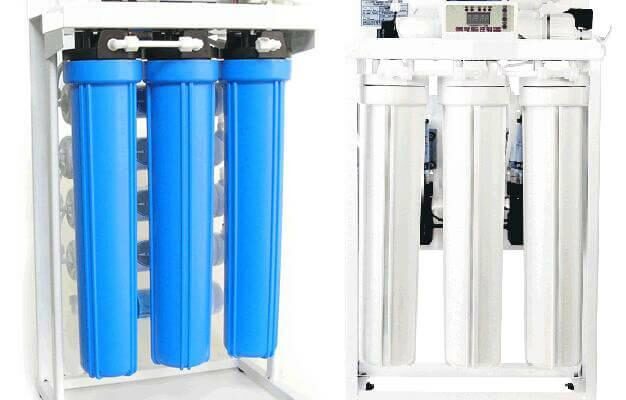Did you know that more than 820,000 people die every year as a result of diarrhea and other diseases caused by drinking unclean water?
This number underscores the importance of clean drinking water. This is where filters come in. These devices protect our health, save us money and allow us to enjoy great-tasting water. They work by removing out all impurities from the water like iron, mercury, lead, and other toxic elements. It also removes excess gases from the drinking sources which are harmful to your health like chlorine, fluoride, etc.
There are many water filter types available in the market like RO systems, carbon filtration, etc, and they all have their own pros and cons. Here, we look at the top 5 types of drinking water filters you should be considering if you are planning to buy water filters online.
Activated Carbon
Activated carbon is the most common water purifier type used in purification systems. It’s a porous material that absorbs, binds, and removes impurities from drinking sources. Activated carbon is also known as charcoal or activated carbon.
These devices are typically made from a variety of products including coconut shell, wood pulp, coal, and other materials. The most common application for activated carbon is removing odors from the water, but they can also remove other contaminants and sediments.
Features
- Works with ad-sorption technology
- Is made up of carbon atoms connected together
- Works well with volatile organic compounds (VOC)
- Removes smells
Reverse Osmosis
Reverse osmosis filtration uses an RO membrane to remove dissolved salts and minerals from the drinking source before it reaches the faucet. The result is purer water that is free of any solids or contaminants, including heavy metals. Reverse osmosis systems typically require more maintenance than activated carbon filters because they must be replaced regularly due to the build-up of minerals over time.
Features
- 99% filtration
- Works with a semi permeable membrane
- Expect some water waste
- Enhances the taste and smell of water
Ultra Violet Filter
Ultraviolet filters are another popular type of filter. These devices use ultraviolet light to kill harmful organic matter like bacteria and viruses. They work by passing ultraviolet light through the water. The UV light reacts with any harmful substances, breaking them down and changing them into something harmless.
This type of filtration system is good for most household uses, but it doesn’t remove everything. So it’s important to change it regularly if you live in an area with high levels of pollutants. You may want to also combine it with another type of filter if you are worried about inorganic compounds like pesticides, lead, and chlorine.
Features
- Comes with a UV lamp that emits UV-C to kill organisms
- Works via mercury vapor
- Disinfects 99% of living organisms
- Zero waste
Gravity/ Squeeze Filters
These options are perfect for outdoor or individual use. The gravity/ squeeze model includes a strainer that traps debris and small particles, which are removed from your drinking source as it passes through the filter.
These types of water filtration systems are ideal for small households that do not use a lot of water. Gravity/ Squeeze Filters are inexpensive, but they can lose their effectiveness over time due to clogging with sediment or other materials found in most drinking sources.
Features
- Does not need electricity or plumbing to work
- Highly portable
- Perfect for camping
- Easy to use
Faucet Filters
These filters are designed to attach directly to your faucet. They feature a special filter cartridge that gathers bacteria and other impurities from your water so they don’t go into your cup or container. They are more expensive than gravity types, but they also eliminate most types of contaminants found in drinking sources by filtering them out as they pass through your home’s plumbing system.
Faucet Filters are able to handle more water volume than gravity models, making them ideal for larger households. However, they should be replaced after every six months or so, depending on usage and frequency of use.
Features
- Tap mountable
- Inexpensive
- Easy to install
- Eliminates most know contaminates via a carbon block filter system
Conclusion
According to the CDC, waterborne diseases cause more than 7 million deaths in the US every year. So whether you live in a particularly polluted area of the country or not, filtration is something that every family should consider.
Our list of the different water filter types above should help you find a perfect type depending on your specific needs. But if you still have questions, don’t hesitate to visit Filter Way to explore many more options.
Ultimately, the best option for you will likely depend on the quality of your local drinking source. So it’s important to check out what you’re drinking and find a system that fits your needs. It’s up to you to decide which system is best for you and your family while sticking with a budget that works too. The most important thing to remember is that clean drinking water should be at the top of everyone’s priority list.













Comments